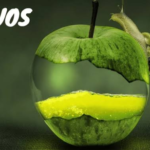Visual storytelling has become one of the most powerful ways to connect with audiences in the digital age. With the rise of platforms dedicated to sharing stories through images, videos, and other visual content, the need for tools that allow creators to craft compelling narratives has only grown. Snapilogue is emerging as a game-changer in this space, providing a unique platform for individuals and brands to engage audiences through creative, visually-driven stories.
This article explores the potential of this platform in the evolving landscape of visual storytelling, examining its key features, benefits, and impact on creators and audiences alike.
Understanding Snapilogue: What It Offers
It is a platform that allows users to create, share, and discover visual stories. It combines the simplicity of traditional storytelling with the versatility of modern media, making it a valuable tool for content creators, marketers, and anyone passionate about visual expression. The platform supports various media formats, including images, videos, and text, enabling users to weave together rich and dynamic narratives.
Key Features of Snapilogue
This platform stands out for several unique features that cater to the needs of modern storytellers:
- Multi-Media Integration: It allows users to integrate multiple media types, including photos, videos, and text, creating a layered storytelling experience.
- User-Friendly Interface: The platform is easy to navigate, allowing even beginners to craft visually appealing stories without the need for advanced technical skills.
- Collaboration Tools: It supports collaborative storytelling, making it an excellent tool for teams working on shared projects or campaigns.
- Personalized Stories: Users can customize their stories with themes, layouts, and styles that reflect their personal or brand identity, ensuring a unique presentation.
Its feature set enables users to create stories that are both visually captivating and easy to consume. This balance between creativity and accessibility is what sets it apart from other platforms.
The Rise of Visual Storytelling
In recent years, visual storytelling has become an essential component of digital marketing, social media, and personal branding. People are more likely to engage with content that is visually stimulating, and platforms like this platform cater to this demand by offering tools that make storytelling intuitive and engaging.
Why Visual Storytelling Matters?
Visual storytelling is effective because it appeals to the way humans process information. Studies show that people retain visual information better than text, and visuals are more likely to evoke emotions. For brands, this translates into higher engagement rates, better retention, and a stronger connection with their audience. This platform enhances this by making it easy for creators to add visuals and deliver stories that resonate.
It also appeals to personal users who want to share meaningful moments with friends and family. The platform allows them to create stories that are not only visually appealing but also intimate and impactful.
How Snapilogue Benefits Different Users?
Its versatility makes it suitable for a range of users, from individual creators to large brands.
For Content Creators
Content creators can leverage it to tell stories in a unique and creative way. The platform’s tools allow them to create multimedia stories that captivate audiences, helping to build a loyal following. Additionally, its user-friendly features make it easy for creators to experiment with new storytelling formats.
For Brands and Businesses
For brands, it provides an opportunity to engage customers through interactive storytelling. Brands can use this platform to showcase their products, share behind-the-scenes content, or highlight customer testimonials, creating a deeper connection with their audience. By integrating it into their digital marketing strategy, brands can enhance customer engagement and improve brand loyalty.
For Educators and Nonprofits
Educators and nonprofits can also benefit from its storytelling tools. By using visuals to convey information, educators can make learning materials more engaging, while nonprofits can share impactful stories that raise awareness and inspire action.
Snapilogue’s Impact on the Future of Storytelling
The development of platforms like this platform reflects a broader shift in how people consume and interact with content. As visual content continues to dominate the digital space, it is paving the way for more engaging and accessible storytelling formats. Here’s how this platform is influencing the future of visual storytelling:
- Increased Accessibility: It makes storytelling accessible to a wider audience by providing simple, intuitive tools that anyone can use. This democratization of storytelling means that more people can share their stories, regardless of technical skill.
- Emphasis on Personalization: It allows users to personalize their stories, catering to a growing demand for unique and customized content. Personalized stories resonate better with audiences, creating a sense of connection and authenticity.
- Enhanced Collaboration: By enabling collaborative storytelling, it fosters teamwork and creativity. This is particularly beneficial for brands and creative teams who want to co-create content.
- Engagement-Driven Format: The interactive nature of its stories encourages user engagement. Whether it’s a brand’s product showcase or a creator’s travel journal, its format keeps viewers invested in the content.
Tips for Getting Started on Snapilogue
For those interested in exploring its potential, here are some tips to make the most of this platform:
- Focus on Storytelling: Rather than simply sharing photos or videos, focus on crafting a cohesive narrative. Think about the story you want to tell and structure your content accordingly.
- Use High-Quality Visuals: Visual storytelling relies on engaging imagery. Use high-quality photos and videos to make your stories more appealing and memorable.
- Experiment with Multimedia: It supports a variety of media, so don’t be afraid to experiment with text, images, and videos. Combining these elements can create a more dynamic and interesting story.
- Keep It Personal: It is designed for personalized storytelling, so let your personality or brand’s voice shine through. Audiences respond well to authenticity, so be genuine in your approach.
- Engage with Your Audience: If you’re using it to build a following, be sure to engage with your audience. Respond to comments, ask for feedback, and make your followers feel involved in your storytelling journey.
Snapilogue vs. Traditional Social Media Platforms
While social media platforms like Instagram and Facebook also support visual content, it offers a more focused storytelling experience. Traditional social media often prioritizes engagement metrics, but this platform allows creators to focus purely on narrative quality. This makes this platform an excellent choice for those who want to prioritize storytelling over short-term engagement metrics.
Its structure encourages longer, more meaningful interactions. This is a significant difference from the rapid-scroll culture on other platforms, which often prioritizes quick visuals over in-depth content.
Conclusion
Snapilogue is shaping the future of visual storytelling by providing a platform that prioritizes creativity, personalization, and user engagement. Its unique approach to storytelling empowers both individual creators and brands to connect with audiences in meaningful ways. As digital storytelling continues to evolve, this platform is at the forefront of this transformation, making it easier for anyone to share stories that resonate.
Whether you’re a seasoned content creator, a brand looking to engage customers, or simply someone who loves sharing stories, it offers the tools to make your narrative come alive. With its emphasis on simplicity and personalization, it promises to redefine how we experience and interact with stories in the digital age.
FAQs
What makes Snapilogue different from other social media platforms?
It focuses on storytelling rather than engagement metrics. This makes it ideal for users who want to share longer, more meaningful narratives.
Can it be used for brand marketing?
Yes, brands can use it to create engaging stories that showcase products, share behind-the-scenes content, and build a connection with their audience.
Is it suitable for beginner content creators?
Absolutely. Its user-friendly interface and intuitive tools make it accessible for beginners looking to start their storytelling journey.
Does it support multimedia content?
Yes, it supports photos, videos, and text, allowing users to create multimedia-rich stories that engage viewers.
How can educators benefit from using it?
Educators can use it to make learning materials more engaging by presenting them in a visually appealing, story-based format that enhances comprehension and retention.







